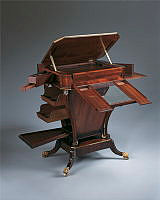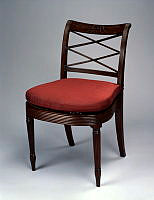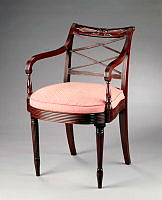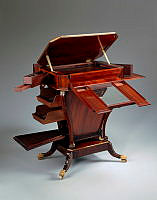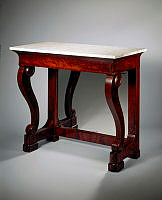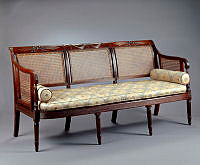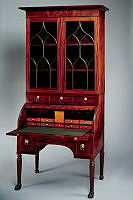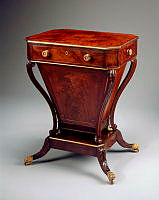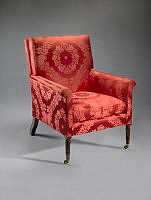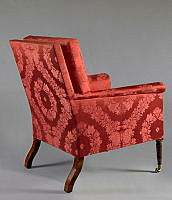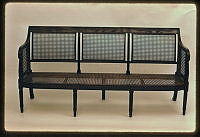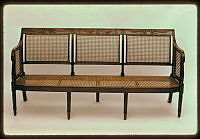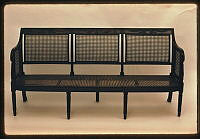Side Chair Attributed to Duncan Phyfe, White House Collection
This armchair is attributed to Duncan Phyfe of New York. Phyfe was born in Scotland and emigrated to New York in 1784. He became one of the premiere cabinet makers in the United States during the first half of the 19th century, known for blending the previous English Neoclassical and Regency styles together in a distinctive way. Phyfe benefited from his location in New York City on Fulton Street, where he was able to ship his furniture out to the southern States and the rich cotton magnates there, as well as to international ports.
